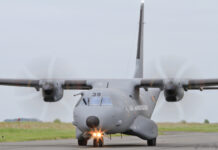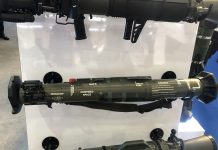A USD 1.22 Bn dollar deal for around 350 Indian Multi-Role Helicopters (IMRHs), meant to replace the existing vintage Mi-17 helicopter fleet in Indian service, is awaiting approval from the Indian government.
The IMRH preliminary design report has been submitted to the Indian government, prepared in alignment with the operational requirements of the Indian armed forces. State-owned Hindustan Aeronautics Limited (HAL) is awaiting funding approval to begin the next phase of the programme, which is the detailed design of the platform. After this is finalised, the prototype can be built, which would take a minimum of four years, after which the prototype would make its maiden flight, followed by certification, which is likely to take another four years before clearance for induction.
The IMRH programme, which was launched in 2008, is expected to begin replacing the Mi-17s from 2028 in a progressive phase-out.
“Without funding approval the team cannot go into detailed design, and this is delaying the programme,” said an official with the IMRH programme, speaking at Aero India 2023 in mid-February.

The multi-role, multi-mission IMRH is being designed to operate at high altitude with a high degree of reliability and survivability. Its other features include a glass cockpit with large area displays, composite main rotor blades and tail rotor, twin engines with full authority digital engine control (FADEC), and a state-of-the-art four-axis digital automatic flight control system.
The IMRH is expected to have a maximum take-off weight of 13 tonnes, a maximum cruise speed of 260 km/h, an 800 km range, a payload at sea level of 4 tonnes, an endurance of four hours, a service ceiling of 6,500 m and a hover ceiling of 5,000 m. HAL has signed a memorandum of understanding with French helicopter engine manufacturer Safran, although the helicopter’s powerplant details have not yet been finalised. The helicopter’s two engines are each intended to produce 2,100 kW.
An ageing fleet of Russian-designed Mi-17s, which have been in service for over 50 years in the Indian Army and the Indian Air Force (IAF), have been the workhorses of the Indian armed forces in high-altitude areas for logistic support, troop movement, reconnaissance and surveillance, and casualty evacuation purposes.
The medium-lift IMRH, which is expected to carry 24-36 personnel, is under development by HAL’s Rotary Wing R&D Centre (RWRDC) in Bengaluru.
The plan is to phase out the existing fleet of Mi-17 helicopters by 2032, by which time HAL has ambitious plans to produce more than 300 IMRHs featuring more power than the Mi-17s.
There are reportedly around 250 Mi-17s in the inventory of the Indian armed forces in three variants. The IAF alone has assessed its requirement for medium-lift helicopters as being for 250 aircraft.
Suman Sharma














